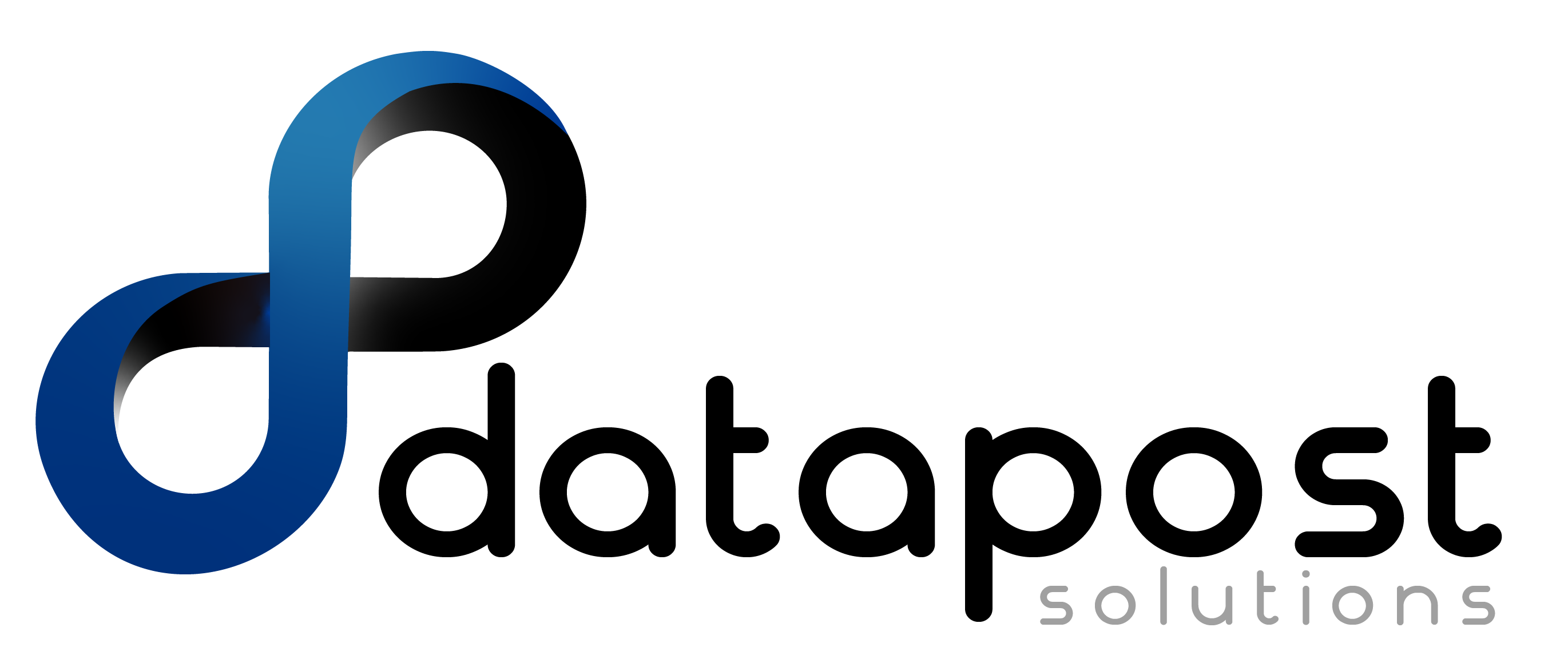How to make a playlist smarter
Back1. Constraints
1.1 Types of Constraints
1.1.1 Global Constraints
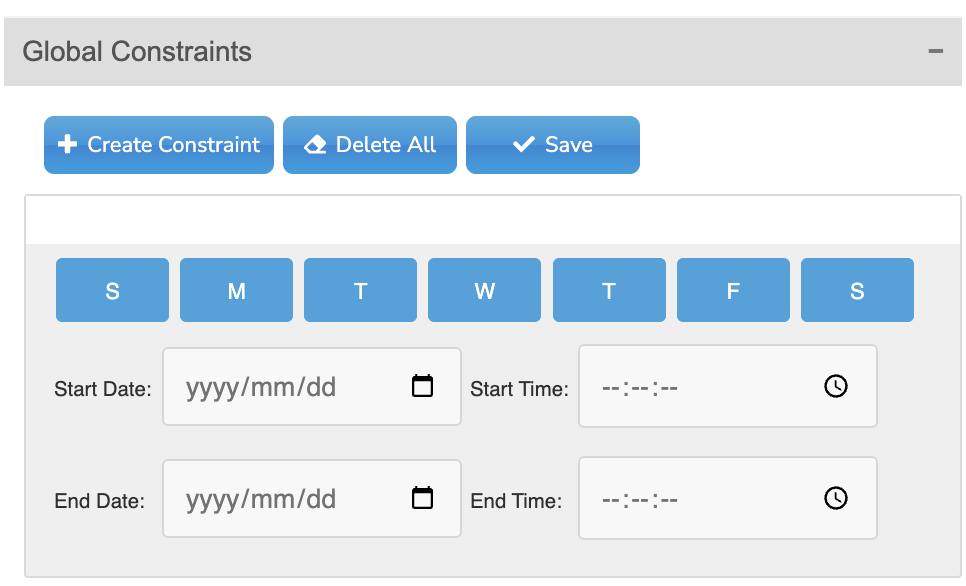
Day Constraints
Content can be constrained to only play on certain days of the week.
Start Date
The start date is the date that the content will start playing.
Start Time
The start time is the time at which the content will start playing.
End Date
The end date is the date that the content will stop playing.
End Time
The end time is the time at which the content will end playing.
Important Note
When applying a global constraint(s) the constraint(s) will be valid on the same piece of content across multiple playlists.
1.1.2 Playlist Item Constraints

Day Constraints
Content can be constrained to only play on certain days of the week.
Start Date
The start date is the date that the content will start playing.
Start Time
The start time is the time at which the content will start playing.
End Date
The end date is the date that the content will stop playing.
End Time
The end time is the time at which the content will end playing.
Important Note
When applying a playlist item constraint(s) the constraint(s) is only valid for that item in that playlist.
2. Containers
2.1 What is a container?
A container is a content list that you create as an item to drop into another content list. I.e. a playlist within a playlist.
2.2 Types of Container Modes
2.2.1 Flatten
When the system reaches the container, it will play all the media in the container from top to bottom, and then move onto the next item in the content list.
2.2.2 Consecutive – All
The system will play the first piece of media in the container and then select the next in sequence to play every time it reaches the container.
2.2.3 Consecutive – Best Fit on Attributes
This container mode is used when scheduling within a network structure. The system will play the first piece of media in the container, with the best fit in terms of its media characteristics matching the player attributes. It will continue to select the next in sequence, with the best fit, to play every time it reaches the container.
2.2.4 Consecutive – Strict Match on Attributes
This container mode is used when scheduling within a network structure. The system will play the first piece of media in the container that strict matches its media characteristics to the player attributes and will move down the list and continue doing so every time it reaches the container.
2.2.5 Random – All
The system will randomly pick a piece of media from the container to play every time it reaches the container.
2.2.6 Random – Best Fit on Attributes
This container mode is used when scheduling within a network structure. The system will randomly pick a piece of media from the container, with the best fit in terms of its media characteristics matching the player attributes, and continue doing so every time it reaches the container.
2.2.7 Random – Strict Match on Attributes
This container mode is used when scheduling within a network structure. The system will randomly pick a piece of media from the container that strict matches its media characteristics to the player attributes, to play every time it reaches the container.
2.2.8 Adform – Play Adform content
This container is used when triggering Adform programmatic content.
2.2.9 Vast – Play Vast content
This container is used when triggering Vast programmatic content.
2.2.10 Vistar – Play Vistar content
This container is used when triggering Vistar programmatic content.
2.3 How to create a container
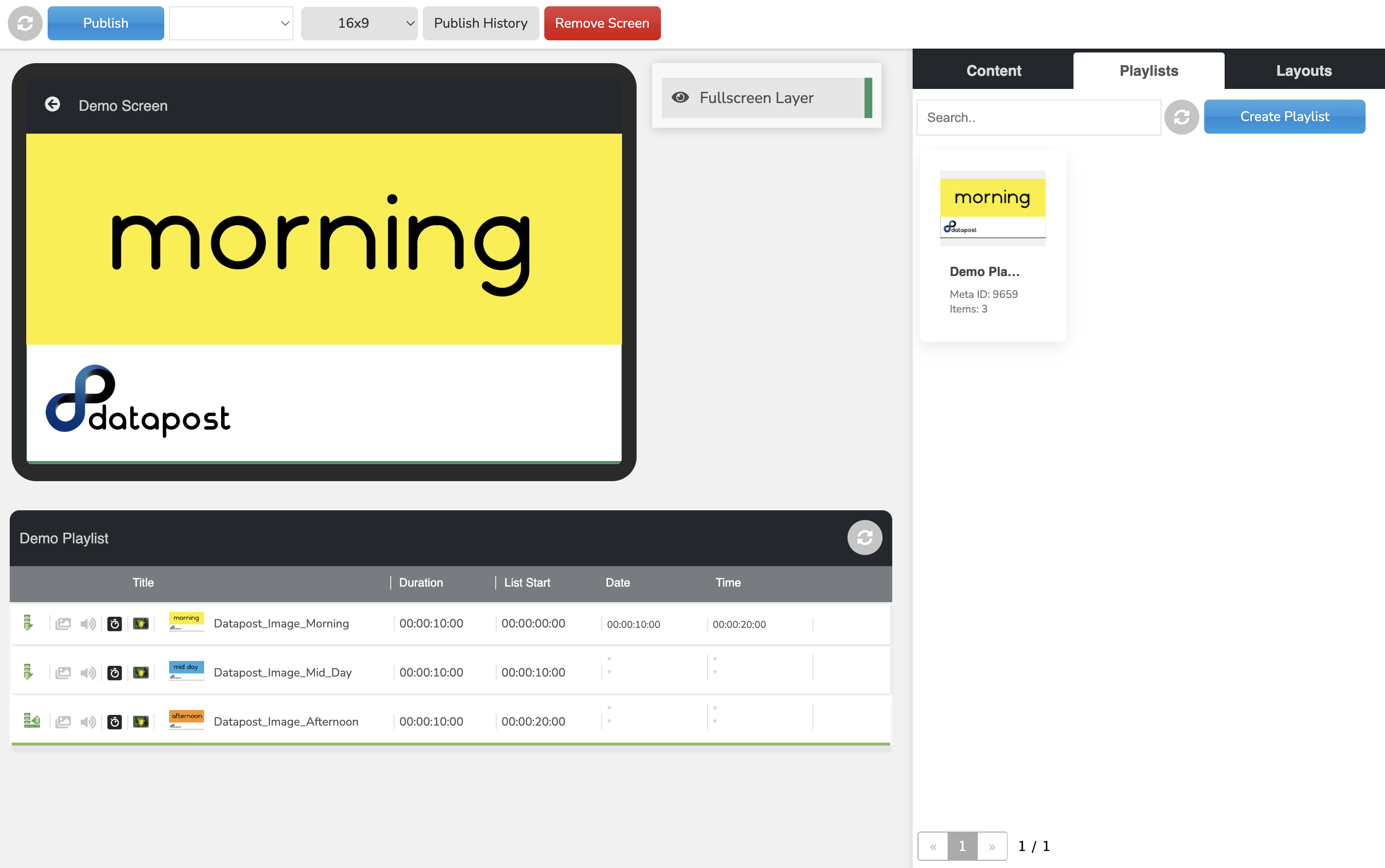
1. Click on the Create Playlist button. A window will open.
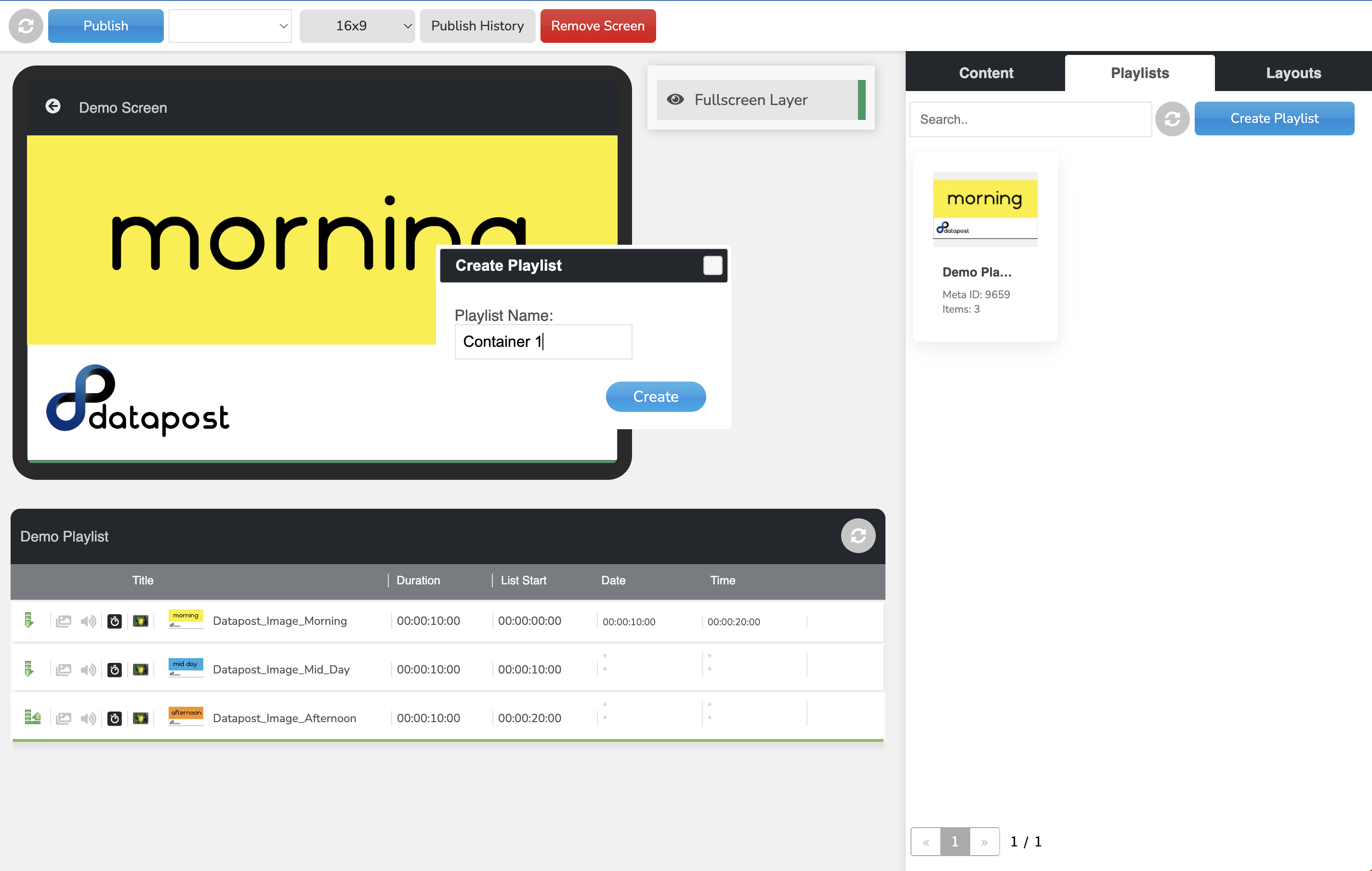
2. Name the playlist/container and click on the Create button.
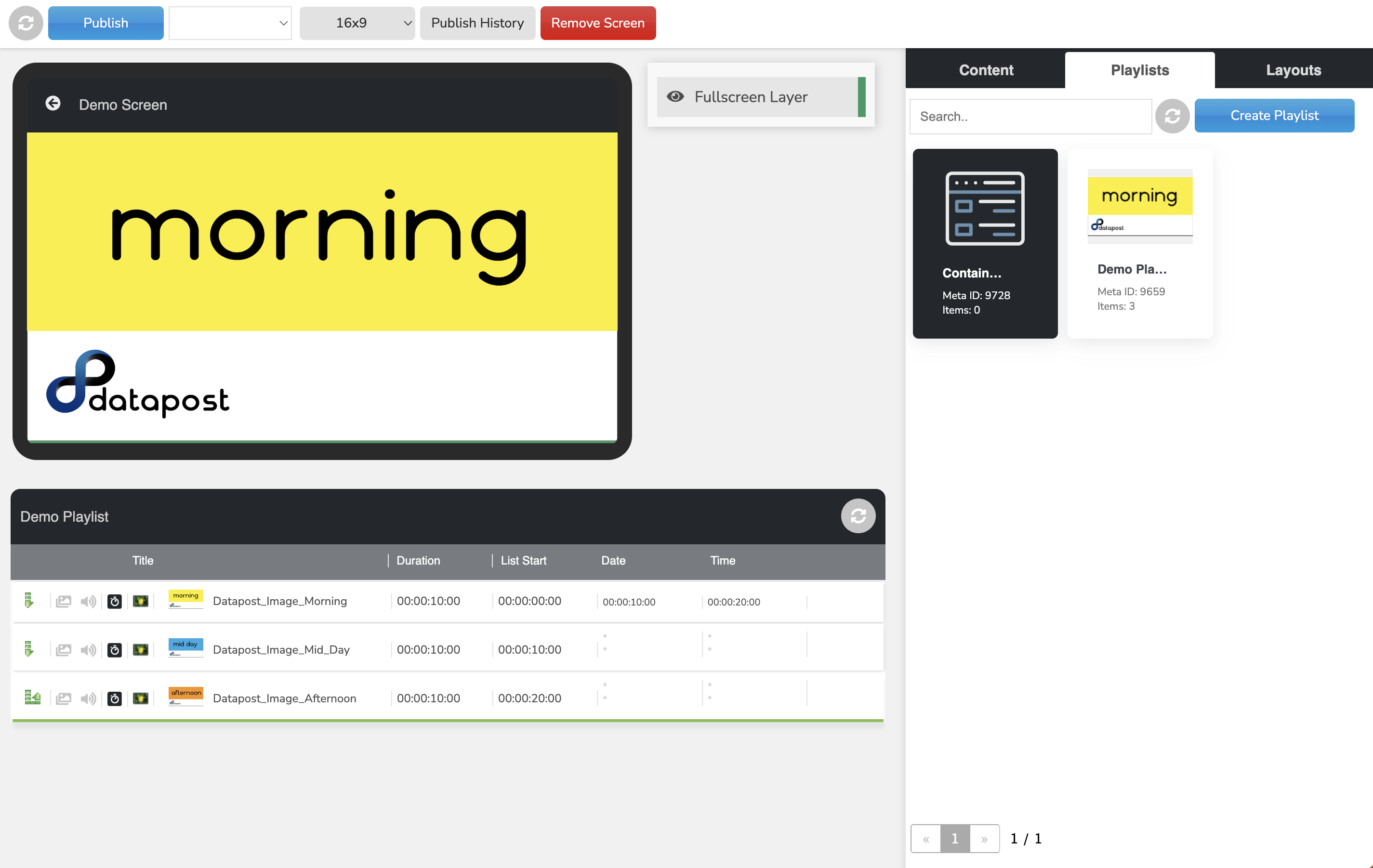
3. The playlist/container will appear in the Playlists panel on the right.
2.4 Cloned Containers
3. Triggers
3.1 What is a trigger?
A trigger is an instruction the system gives a piece of media or container, to play at a specific time(s) or specific frequency.
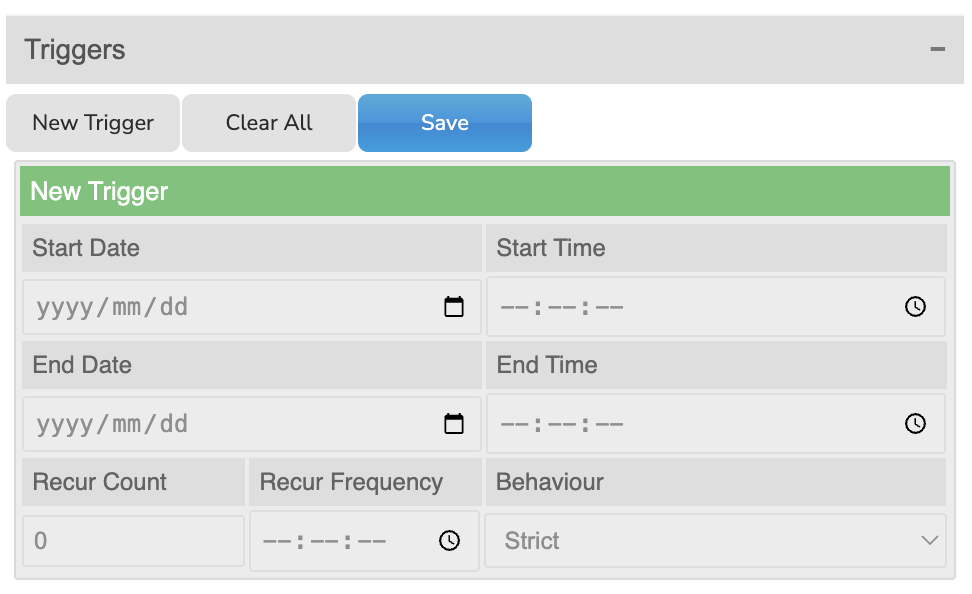
Start Date
The start date is the date that the content will start triggering on.
Start Time
The start time is the time at which the content will start triggering.
End Date
The end date is the date that the content will stop triggering on.
End Time
The end time is the time at which the content will stop triggering.
Recurring Count
The number of times a piece of content must trigger within certain date and time constraints.
Recurring Frequency
The frequency at which a piece of content must trigger within certain date and time constraints.
Behaviour
Strict
The content in the list will be interrupted by the content being triggered to adhere to the selected time, recurring frequency or recurring count.
Slot In
The content being triggered will slot in after the content that was lined up by the system has finished playing. This is done to get as close to the recurring frequency or recurring count as possible without interrupting content.
